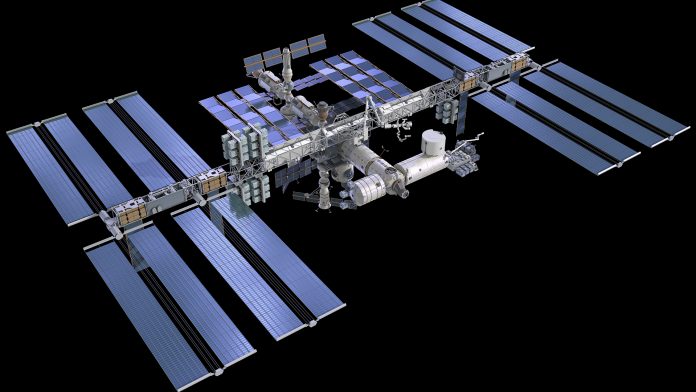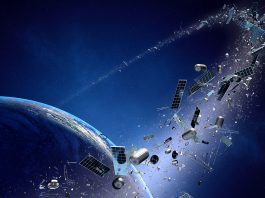Innovative self-healing materials have been developed for testing on the International Space Station by researchers at the University of Illinois Urbana-Champaign.
Currently, many materials with aerospace functions – including polymers – are subject to degrading and eroding with prolonged exposure to atomic oxygen, ultraviolet radiation, and extreme temperature cycling in outer space.
As well as this, due to orbiting spacecraft, like the International Space Station (ISS), journeying through space at around 18,000 miles per hour, micrometeoroids and various space debris present a serious danger to the structural durability of lightweight space structures comprised of polymers and their composites.
Self-healing materials for use in space structures
In order to overcome these difficulties, research labs at University of Illinois Urbana-Champaign (UIUC) have worked towards the development of self-healing materials that include specially designed microparticles and nanoparticles, which have the potential to offer a far more robust solution for space structures. Now, for the first time, these self-healing materials have been sent into orbit for testing at the ISS National Laboratory.
“The materials we use are novel nanocomposites, based on thermosetting polydicyclopentadiene (pDCPD)-matrix mixed with self-healing components, which can be cured in a matter of minutes to hours compared to traditional thermosetting polymers that take days to cure inside an autoclave. Also, these novel pDCPD-based materials are amenable to additive manufacturing techniques with the potential for rapid fabrication or repair of parts right where they are in space,” explained Debashish Das, a postdoctoral scholar in the Department of Aerospace Engineering at UIUC.
Sample materials sent into space
The professors leading this research effort – Nancy Sottos and Ioannis Chasiotis – are being funded by the Air Force Office for Scientific Research and the ISS National Lab to develop sample materials that would be mounted on the ISS facing three different directions, as every side exposed to environments with varying quantities of ultraviolet radiation and atomic oxygen: ram, in the direction of travel; wake in the trailing direction; and zenith, facing away from the earth.
Due to the massive expenses that come with conducting experiments in space, the samples were each the size of the rubber on top of a pencil! Overall, 27 samples were fixed to three different places, each at one square inch. The inclusion of a window over each sample enables the exposure of the sample to the different conditions in space.
Aerospace graduate student Eric Alpine and AE faculty’s Michael Lembeck utilised the facilities in the Talbot Laboratory to ascertain the volatile content in the samples to be exposed to space. The samples were cooked under a high vacuum at 176 degrees Fahrenheit for 24 hours in order to replicate accelerated space conditions. The mass loss of all the samples stayed within the standard limit permitted by NASA.
Materials Science and Engineering PhD student Kelly Chang and postdoctoral scholar Mayank Garg, in the Autonomous Materials Systems Group at the Beckman Institute, built the self-healing strategies and fabricated all of the samples.
Chang commented: “Based on a prior experiment at the ISS by Professor Chasiotis’ group, we know that embedding glass nanoparticles in all of the samples will improve the erosion resistance.
“In Professor Nancy Sottos’ group, we have been experimenting with a more active mechanism for resisting erosion damage. We embedded microcapsules, holding active materials that are triggered when the atomic oxygen in space ruptures the capsules and allows the liquid core of these capsules to react.”
Chang also explained that there are samples without the capsules, and these will behave as controls for future experiments. The samples also include standard aerospace-grade epoxy for comparison.
Das added that if these self-healing polymers demonstrated themselves to be effective in space, it may lead to massive advancements in manufacturing in outer space. “That’s a long-term goal,” he said, “to be manufactured in space.”
Garg concluded, “If our hypothesis that these novel materials resist erosion for a longer period compared to epoxy-based materials stands, then we will have an alternative to epoxy-dominated markets for space, as well as earth-based applications.”
Further details on the development of this material and the space experiment have been published on the ISS National lab website.









